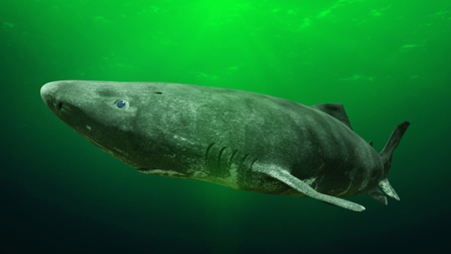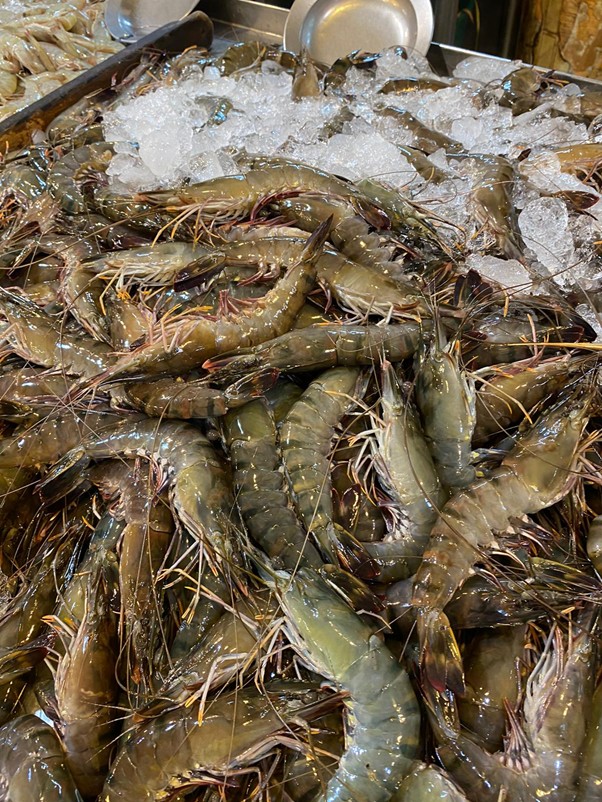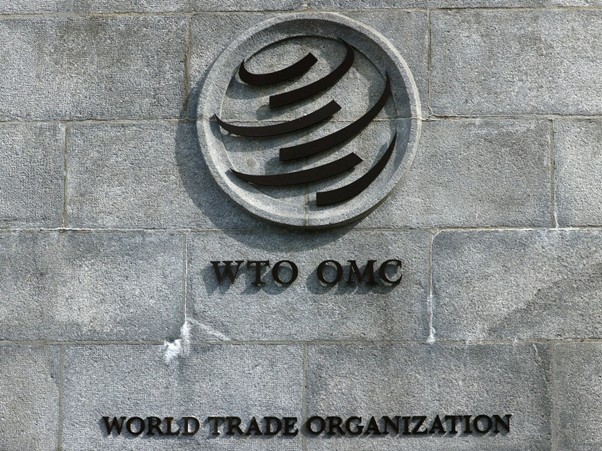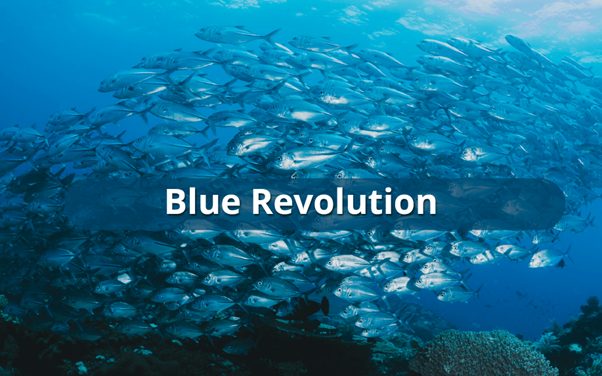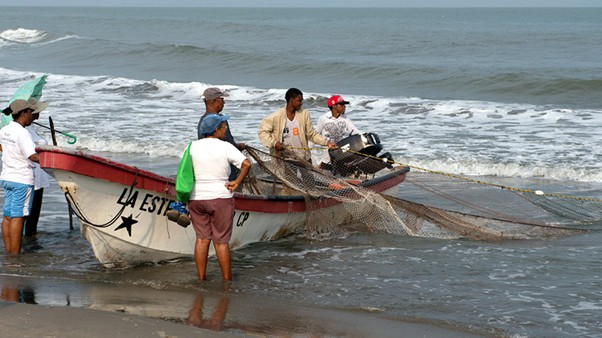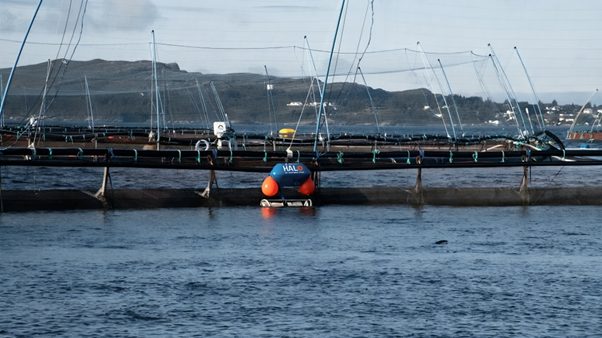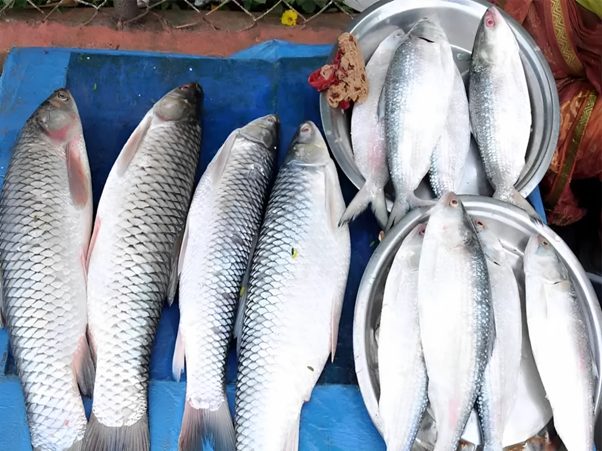India’s fisheries and aquaculture sector is seeing a strategic leap forward through two major developments:
India–UK Free Trade Agreement
MoU with the Maldives on Fisheries Cooperation
What’s New?
Duty-Free Access to UK under the CETA deal is expected to boost Indian seafood exports—especially shrimp—by up to 70% over the next few years.
MoU with Maldives focuses on:
Sustainable tuna fishing
Deep-sea fisheries development
Aquaculture & processing infrastructure
Joint R&D & knowledge exchange
Fisheries eco-tourism
Why This Matters:
India exported seafood worth ₹60,523 crore in 2024–25
UK imported just ₹879 crore—huge headroom for growth
Exporters gain new access to high-value markets
Industry can strengthen traceability, standards & competitiveness
Opens doors to deep-sea fishing and Blue Economy partnerships
These agreements are more than trade—they’re catalysts for transforming India’s position in the global seafood and aquaculture value chain.
Let’s gear up for the next phase of innovation, sustainability, and export excellence.
News
𝗙𝗿𝗼𝗺 𝗚𝘂𝗻𝘀 𝘁𝗼 𝗚𝗶𝗹𝗹𝘀: 𝗛𝗼𝘄 𝗙𝗼𝗿𝗺𝗲𝗿 𝗡𝗮𝘅𝗮𝗹𝗶𝘁𝗲𝘀 𝗶𝗻 𝗝𝗵𝗮𝗿𝗸𝗵𝗮𝗻𝗱 𝗧𝘂𝗿𝗻𝗲𝗱 𝗜𝗻𝘁𝗼 𝗦𝘂𝗰𝗰𝗲𝘀𝘀𝗳𝘂𝗹 𝗙𝗶𝘀𝗵 𝗙𝗮𝗿𝗺𝗲𝗿𝘀 – Narendra Modi
In a remarkable transformation, over 1,300 former extremists in Left Wing Extremism-affected areas of Jharkhand have turned to fish farming, forging a new path of peace and livelihood. This inspiring change has been made possible under the Pradhan Mantri Matsya Sampada Yojana (PMMSY) — a government initiative aimed at boosting India’s fisheries sector while fostering social and economic rehabilitation.
These ex-Naxalites, once part of insurgent groups, have now been trained in scientific aquaculture techniques, empowering them to build sustainable incomes. The government’s support through PMMSY not only offers financial aid but also technical know-how, equipment, and infrastructure — giving these individuals a second chance at life.
Fish farming in Jharkhand is doing more than just producing food — it’s driving peace, restoring dignity, and transforming rural communities. The initiative shows how the Blue Economy can be a powerful tool for inclusive development and conflict resolution.
Prime Minister Narendra Modi praised this achievement in his monthly radio address, Mann Ki Baat, highlighting it as a model for the nation. He emphasized that fisheries are not just a sector of economic growth but a force for social upliftment.
This story from Jharkhand is proof that when development meets vision, even the most unlikely journeys can end in hope. Fish farming is no longer just an industry — it’s a symbol of change.
𝗣𝗮𝗱𝗺𝗮 𝗛𝗶𝗹𝘀𝗮 𝗠𝗶𝘀𝘀𝗶𝗻𝗴 𝗳𝗿𝗼𝗺 𝗞𝗼𝗹𝗸𝗮𝘁𝗮 𝗣𝗹𝗮𝘁𝗲𝘀! 𝗠𝘆𝗮𝗻𝗺𝗮𝗿 & 𝗚𝘂𝗷𝗮𝗿𝗮𝘁 𝗙𝗶𝘀𝗵 𝗡𝗼𝘄 𝘁𝗮𝗸𝗲 𝗰𝗲𝗻𝘁𝗿𝗲 𝘀𝘁𝗮𝗴𝗲.
This year, Kolkata’s love story with Padma Hilsa (from Bangladesh) is on hold. With extremely limited supply and rising prices, fish traders and consumers are turning to hilsa from Myanmar and Gujarat instead.
Traditionally, Padma Hilsa is a must during festivals like Jamai Shashti and Durga Puja. But with poor imports and high costs (₹1,800–₹2,000/kg), people are choosing affordable options.
Why the shift?
Myanmar hilsa has softer bones and better availability
Gujarat hilsa is cheaper and accessible
Local demand is high, but Padma supply is low
Even fish markets like Sealdah and Gariahat are filled with non-Bangladeshi hilsa varieties. Experts say this may be the start of a long-term trend unless import policies and cross-border agreements improve.
Can India invest more in domestic hilsa production?
Will local hatchery-based solutions meet this growing demand?
One thing is clear: consumer preferences are changing fast—and the fish business must keep up!
This shark was born before the Taj Mahal was built… and it’s still swimming today!
Yes, you read that right! Scientists discovered a Greenland shark, currently living in the icy waters of the North Atlantic, that could be over 400 years old — making it the world’s longest-living vertebrate.
Researchers used a unique method called radiocarbon dating on the shark’s eye lens proteins (which don’t change from birth) to estimate her age. They concluded she was likely born between 1501 and 1744, with most predictions placing her around 1620.
Measuring nearly 5 meters in length, this incredible female Greenland shark has outlived every known vertebrate, including the 211-year-old bowhead whale!
Greenland sharks are known for:
Growing extremely slowly (they mature at 150 years!)
Living for centuries in deep, cold waters
Giving us new insights into marine longevity and evolution
As climate change, overfishing, and pollution threaten marine life, stories like this remind us how precious and mysterious our oceans truly are.
Born before Shakespeare. Still alive today. The ocean holds more secrets than we can imagine.
𝗧𝗶𝗴𝗲𝗿 𝗣𝗿𝗮𝘄𝗻 𝗟𝗼𝘀𝗶𝗻𝗴 𝗜𝘁𝘀 𝗧𝗵𝗿𝗼𝗻𝗲? 𝗩𝗮𝗻𝗻𝗮𝗺𝗲𝗶 𝗧𝗮𝗸𝗲𝘀 𝗢𝘃𝗲𝗿 𝗔𝗻𝗱𝗵𝗿𝗮’𝘀 𝗔𝗾𝘂𝗮𝗰𝘂𝗹𝘁𝘂𝗿𝗲!
Once the king of coastal aquaculture, Tiger Prawn farming in Andhra Pradesh is slowly fading from the spotlight. Farmers are switching to Vannamei shrimp, which is easier to farm, cheaper to maintain, and gives better returns.
Why Tiger Prawn is Losing Popularity:
High risk of diseases like White Spot Virus & EHP
Higher input cost and longer culture period
Difficulty in getting high-quality seed from reliable hatcheries
Why Farmers Prefer Vannamei Now:
Better survival rate and resistance to diseases
Easier access to seed and hatchery support
Quick turnaround with higher market demand
In West Godavari alone, Vannamei now covers 2.5 lakh hectares. Meanwhile, tiger prawn farming is limited and shrinking each year.
But not all hope is lost for Tiger Prawn lovers! With good biosecurity, strong disease management, and high-quality broodstock, this premium species can still shine.
What’s Needed for a Comeback:
Reliable hatcheries with virus-free broodstock
Farmer training on disease management
Policy support to diversify shrimp farming
The future of prawn farming depends on innovation, resilience, and smart choices!
𝟱𝟬 𝗡𝗮𝘁𝗶𝗼𝗻𝘀 𝗕𝗮𝗰𝗸 𝗜𝗻𝗱𝗶𝗮 𝗮𝘁 World Trade Organization! | 𝗙𝗶𝗴𝗵𝘁 𝗳𝗼𝗿 𝗙𝗶𝘀𝗵𝗲𝗿𝗺𝗲𝗻’𝘀 𝗥𝗶𝗴𝗵𝘁𝘀 𝗚𝗼𝗲𝘀 𝗚𝗹𝗼𝗯𝗮𝗹
India just got a MAJOR boost in its fight for fair fishery subsidy rules at the WTO!
Over 50 developing countries have come together to support India’s stand against unfair restrictions on fisheries subsidies. The goal? Protect the rights and livelihoods of small-scale fishers and coastal communities across the Global South.
India is leading the call for a 25-year transition period for developing nations – ensuring that traditional fishermen don’t lose out while developed nations continue deep-sea fishing with high-tech fleets.
“We need fair trade, not forced sacrifice. No one-size-fits-all!” — India at WTO.
What India Wants:
Special treatment for developing nations
Target illegal, unreported, and unregulated (IUU) fishing
Allow poor nations to support small fishers
Put equity at the heart of global rules
This isn’t just policy – it’s about justice for millions who depend on fishing for food and livelihood.
With over 50 nations on board, India is making waves for a fair and inclusive blue economy!
𝗜𝗻𝗱𝗶𝗮’𝘀 𝗕𝗶𝗴𝗴𝗲𝘀𝘁 𝗙𝗶𝘀𝗵𝗲𝗿𝗶𝗲𝘀 𝗘𝘃𝗲𝗻𝘁 𝗪𝗿𝗮𝗽𝘀 𝗨𝗽 𝘄𝗶𝘁𝗵 𝗚𝗮𝗺𝗲-𝗖𝗵𝗮𝗻𝗴𝗶𝗻𝗴 𝗩𝗶𝘀𝗶𝗼𝗻 𝗳𝗼𝗿 𝗕𝗹𝘂𝗲 𝗥𝗲𝘃𝗼𝗹𝘂𝘁𝗶𝗼𝗻!
The 2nd Indian Fisheries Outlook (IFO) concluded in Berhampur, Odisha, with a strong focus on sustainable blue growth and innovation in the fisheries sector. Hosted from 12th to 14th July 2025 at the College of Fisheries (OUAT), this landmark event brought together 250+ farmers, scientists, policymakers, industry leaders, and youth for three power-packed days.
What made it special?
376+ research abstracts
7 major thematic sessions on climate-smart aquaculture, genetics, post-harvest, feeds, aquatic health & more
National exhibition on fisheries innovation
Young Fisheries Talent Award (YFTA) showcasing 30 youth researchers
Open dialogue with farmers and 10 leading industrial experts
Massive support for “Phrase4Change” – a vision for empowering small-scale fishers
Dignitaries like Shri Gokulananda Mallik (Minister, Odisha), Dr. J.K. Jena (ICAR- Indian Council of Agricultural Research), Dr. B.K. Das (Central Inland Fisheries Research Institute (CIFRI)), Dr. K.K. Lal (Central Institute of Brackishwater Aquaculture CIBA(ICAR)), and Dr. B.K. Behera (National Fisheries Development Board) joined hands to highlight the need for synergy between fisheries, agriculture, and livelihoods.
From policy to pond, the event served as a national platform to reimagine fisheries with research, technology, and farmer-first thinking.
Let’s build the future of Indian fisheries—climate-resilient, youth-driven, and inclusive!
If you’re a traditional fisherman in Goa looking to buy or build a small fishing boat (below 26 feet) for inland waters, this update is for YOU!
The Goa Directorate of Fisheries has changed the eligibility rules for its financial assistance scheme for new fishing canoes.
What’s New?
To apply, you must now have at least ONE of the following:
An OBC Kharvi caste certificate
A profession certificate from the Mamlatdar, Municipal Chief Officer, or Panchayat Secretary
OR a valid fishing net license registered with the Fisheries Department
PLUS: You must apply within 6 months of registering your canoe with the Captain of Ports Department
Why it matters
This scheme supports small traditional fishers who want to modernize their operations
Ensures help reaches genuine fishing communities
Adds clarity and accountability to government support programs
If you or someone you know is planning to get a new fishing canoe — don’t miss the 6-month deadline!
A company from Norway called Remora Robotics has raised ₹120 crore (around €13.7 million) to grow its business. This money will help them make more of their underwater robots that clean nets and check fish cages in big salmon farms.
These robots can work without boats or manual labour — and that’s a big saving for fish farmers.
What the Robot Does:
Cleans cage nets gently (no pressure washing)
Uses AI to check for damage and fish health
Collects water data from around the cages
Helps keep fish calm and healthy
Reduces risk of disease and improves survival rate
The result? Better fish, lower labour, and higher production.
Company Info:
Started in 2016, based in Stavanger, Norway
Works with big salmon farmers
Supported by research groups like SINTEF, Norwegian University of Science and Technology (NTNU), and Aquastructure Solutions Inc.
Already tested in the field and used in real farms
What’s Coming Next:
Their production is almost sold out for the next 6 months
At Aqua Nor expo (August), they will launch new software for live cage monitoring
The new system will include AI-based net inspection and real-time data tools for farmers
CEO Svein Erik Gregersen said:
“We’re proud of what the team built. Now we’ll grow faster and give even more value to fish farmers.”
This kind of tech is now common in Norway’s salmon farming.
Can we adapt something similar for India’s cage farms or shrimp hatcheries?
We’ll keep an eye on it.
Pulasa season has started — and as expected, the madness has returned.
In Andhra Pradesh, a single Godavari Pulasa fish was recently sold for ₹22,000 at an auction. For those who follow this tradition, this is no surprise. In peak demand, prices can touch ₹50,000 per fish.
This happens every monsoon, when the Pulasa swims upstream into the Godavari from the sea. Its season is short, the catch is limited, and the cultural demand is high.
Local traders say it’s not just about taste — the Pulasa holds value for its soft texture, local identity, and even medicinal beliefs. The auction hype adds to the premium pricing.
For many, this fish is not just food. It’s part of monsoon culture.
It’s also a reminder that strong cultural branding — even without export tags or fancy packaging — can create real value at home.
Might be worth asking: Can more native fish in India be positioned like this?




